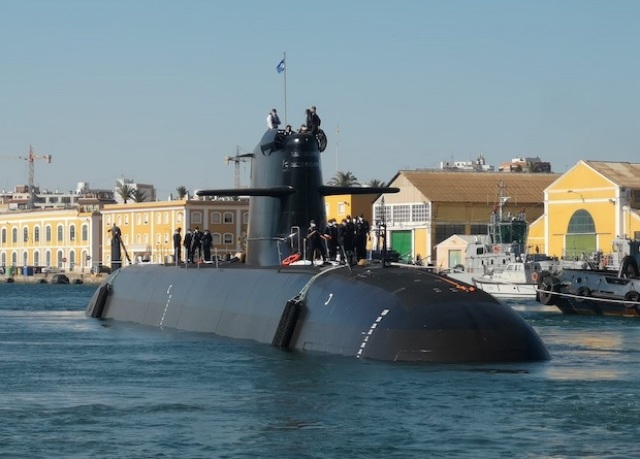The Spanish company Navantia has started testing the combat system for the lead submarine of the S-80 project "Isaac Peral". It will monitor the submarine's armament, track targets and provide information necessary for missions. According to Naval News, while it was tested on land, but on August 31 it will be installed on the first Spanish submarine.
The S-80 project is the first fully Spanish development of a submarine. Navantia is building four ships based on it. They will replace the outdated Galerna-type submarines developed by the French company DCNS in the seventies as part of the Spanish Navy. With a length of 80.8 meters and a width of 11.68 meters, the displacement of diesel-electric submarines is three thousand tons. The S-80 can reach speeds of up to 19 knots.
The construction of submarines was accompanied by serious problems. In 2013, it was suspended — design errors increased the weight of the ships by an average of 68 tons. Because of this, they could have difficulty surfacing. Two years later, Navantia finalized the ships by installing additional sections in the submarine hulls.
The lead submarine of the Isaac Peral project [...] was launched in May, although this was supposed to happen in 2020. Her sea trials are scheduled for 2022, and in 2023 she should become part of the Spanish fleet.
On August 9, Navantia announced the start of testing the first version of the combat system for the Isaac Peral ICSC. It includes active and passive sonars with long, medium and short range for combat, navigation and research tasks, a weapons system with underwater anti-ship missiles, multi-purpose torpedoes and mines, as well as an integrated communication system. The latter includes a satellite channel and a tactical data transmission line. ICSC will allow you to track several goals at once. While it is being tested on land, but on August 31 it will be installed on a submarine.
Navantia has developed not only the first Spanish submarine, but also an anaerobic installation for it. Earlier we wrote that it will allow the submarine to spend more time underwater.
Vasilisa Chernyavtseva

